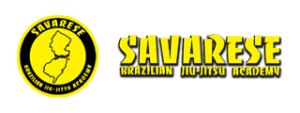Don’t give your back in BJJ!
Don’t give your back in BJJ!
Don’t give your back in BJJ! It’s also better to have the floor on your back than an opponent on your back. We are big on this at Savarese BJJ (www.njbjj.com). The worst situation in a grappling match is to have an opponent on your back. From there he has many of the most high percentage submissions in the sport available to use join you whilst you have only a few very low percentage submissions to fire back with. He has a powerful and robust position that is very difficult to escape from when well applied. Thus we must do our best to avoid back exposure as much as possible. When it does happen that your back is exposed to a dangerous opponent, the safest general strategy it to get your upper back to the floor. The logic is simple, if the FLOOR is on your back, then there won’t be space for an opponent to be on your back. Accordingly most of the back escapes of Jiu Jitsu favor the strategy of upper back to the floor – this is the one that minimizes back exposure to an opponent. There are other strategies. You can stand up, threaten kimura etc etc and these can definitely work, but they do result in a degree of back exposure such that if they DON’T work, they can get you in deep trouble. So when you feel the danger of back exposure – try getting your upper back to the floor as a first
